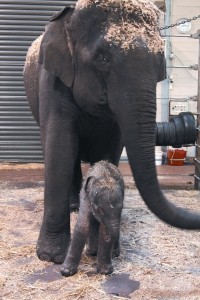 An expert panel led by NSW Health is continuing work to determine the source of a tuberculosis (TB) outbreak at Taronga Zoo.
An expert panel led by NSW Health is continuing work to determine the source of a tuberculosis (TB) outbreak at Taronga Zoo.
In February media reported the TB diagnosis of Pak Boon, one of Taronga’s elephants.
In September Taronga issued a statement on its website which said a male chimp with the disease had been euthanased.
There have been no public health warnings about the presence of the disease at Taronga, drawing criticism from NSW Greens MP John Kaye, who said potential visitors to Taronga were denied the right to evaluate the risk of infection.
“The elephants and the chimps are in enclosures that are 50 metres apart, and there are two public walkways in between,” Kaye said.
“It is possible there is a risk to humans; not a great risk, but I think NSW Health and the zoo are making it impossible for clients to make their own assessments.”
Kaye has called on Health Minister Jillian Skinner to force the zoo to warn visitors of the presence of TB in two species, and therefore the possibility that the infection spread from one to the other.
He added that he is particularly concerned about school groups.
“Teachers and principals have to sign off on the well-being of children without being given full information, so I will continue to put pressure on NSW Health,” Kaye said.
“Australia has an excellent track record for infection control regarding TB, and it would be a terrible thing to compromise that record to support the profitability of the zoo.”
Taronga Media Relations Manager, Mark Williams, denied that profits have been put before public health.
“There’s no question of putting public health at risk, and the focus of the NSW Department of Health’s assessor has been the safety of zoo visitors,” he said.
“There is no active TB in the zoo among staff or animals, and the animals concerned are undergoing treatment.”
Williams said Pak Boon has been on treatment for a year and is very healthy.
“The one chimp that was diagnosed was euthanised due to poor general condition,” he said.
“None of the other chimpanzees have TB, but they have been put on a preventative regime regardless.”
Williams added there is no greater risk of infection in the zoo than there is in day-to-day life.
“We have to be aware of that and look after our animals, our keepers and our visitors,” he said.
“I am glad Kaye and I share that concern, but the fact is the events have been carefully handled.”
In regard to public notification, Kaye said there have been regular updates on the public notices section of the zoo’s website.
“The story has also been carried by the [Sydney Morning] Herald, so it has hardly been a secret.”
Williams also responded to theories the disease may have jumped species via water droplets, transferred by high pressure hoses used to clean out enclosures.
“Taronga does not use high pressure hoses,” he said.
Assistant Secretary of Animal Biosecurity in the Department of Agriculture, Andrew Cupit, said visitors to the zoo were not likely to contract TB.
“Usually you have got to be in direct contact with the animal,” he said.
“You’ve got more chance of catching from a person or going offshore.”
“The risk would be with the keepers themselves, but I understand the zoo is monitoring the situation closely.”
Regarding the origin of the transmission, Cupit said the TB may have been transmitted through a keeper.
“Theoretically it is a possibility, or perhaps through shared feeding equipment,” he said.
“It is worth noting that TB can remain in dormant in animals, and indeed humans, so it can be difficult to detect in quarantine.
“I believe in this instance the elephant became pregnant, and it is possible the stress of pregnancy caused the TB to become more active.”
Cupit added that he believed Taronga “probably did as much as they could” to make visitors aware of the situation.
“They did not try to hide it, and there has been publicity around the incident since February,” he said.
University of New South Wales Medical Sciences research fellow, Fabio Luciani, echoed the Cupit’s sentiments and said the likelihood of TB transmission to the public is remote.
“More likely is the potential transmission from animals to keepers,” he said.
“Though it is not easy to transmit non-active TB, it is theoretically possible.
“It’s also important to note that there is very little knowledge about the transmission of TB from animals to humans.”
Regarding the source of the original infection, Luciani believes there are several possibilities.
“The elephant could have been infected by a human or perhaps even soil or food;” he said.
“Regarding TB cases in zoos, to the best of my knowledge elephants are always involved, which is interesting.”
SAM WORRAD

